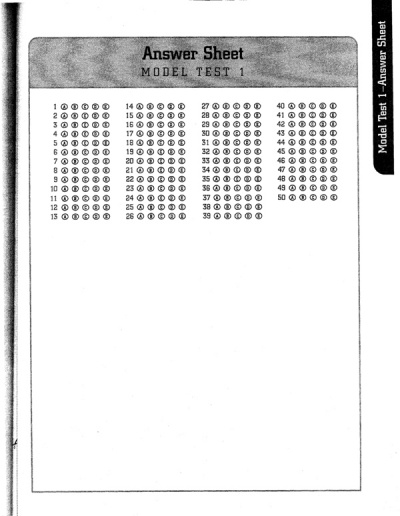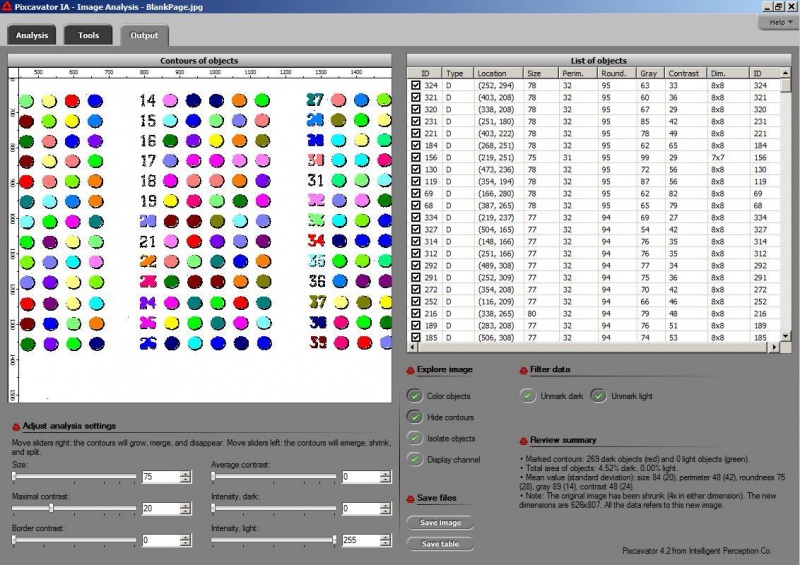The full name is REU Site: Computational Science Training at Marshall University for Undergraduates in the Mathematical and Physical Sciences (PI Howard Richards). REU stands for “Research Experiences for Undergraduates”. The grant was just approved b the NSF but the application dealine in April 9. If you know anyone who might be interested, encourage them to apply. This is the website: http://www.marshall.edu/REU/.
I will be supervising 2 students in 1-2 of these areas:
Temporary page for the projects: Computational science training: 2010 projects.
Comments Off
Q: Can Pixcavator extract data from Scantron pages, i.e., bubble sheets used for testing, polls, voting, etc.?
Two images of an answer sheet below (the originals were 2.5 MB each with a resolution of 2504×3229 pixels).


Let’s see if we able to capture the bubbles.


Not hard at all. The first image shows how empty bubbles are captured, in the second - only the marked ones, but not crossed. (Here is a company that is doing something very similar [1]. Cost $1K.)
Examples with similar analysis:
Even though the origins of these images are very different, the images themselves are similar to these and the approach to analysis might be identical. There are many examples like this…
The first on the list also provides a prototype program that displays instead of the usual Pixcavator’s output table - a table of 0s and 1s for unmarked marked bubbles respectively.
Other image analysis examples
Comments Off
Two years ago I had a post here (follow-up) where I dared to compare these two programs. The reaction was unfavorable. The ImageJ ticket quoted below seems to indicate that there has been a slight shift.
Wayne [Rasband] had an idea for a command called “Analyze Image” that combines filtering, background correction, segmentation, particle analysis, etc. It would work something like the closed-source, Windows-only Pixcavator program. As Wayne said, “It would not be an easy thing to create but it would be very popular with ImageJ users”.
I agree.
Comments Off
Prof. Marian Mrozek was kind enough to inform me about the coming update of CHomP in his email that I quote below:
The power of the software comes from much newer algorithms. Some of them are described in the papers:
- M. Mrozek, P. Pilarczyk, N. Zelazna, Homology algorithm based on acyclic subspace, Computers and Mathematics with Applications, 55 (2008), 2395 –2412.
- M. Mrozek, B. Batko, Coreduction homology algorithm, Discrete and Computational Geometry, 41 (2009), 96-118.
- M. Mrozek, Cech Type Approach to Computing Homology of Maps
Discrete and Computational Geometry, accepted
- and a few more which are just in preparation.
We just finish[ed] writing a new, much stronger version of the software which will accept not only cubical complexes but also simplicial complexes and general CW complexes and will produce broader output, in particular homology generators, homology maps and persistence intervals for filtered complexes.
The new version of our software at first will be available from the webpage
of our CAPD group at Jagiellonian University, Krakow, Poland:
http://capd.ii.uj.edu.pl/.
Take a look also at our Homology Software page.
Comments Off






